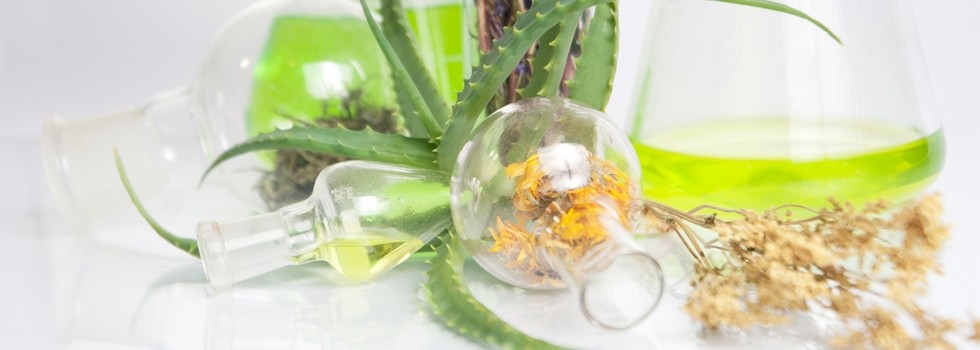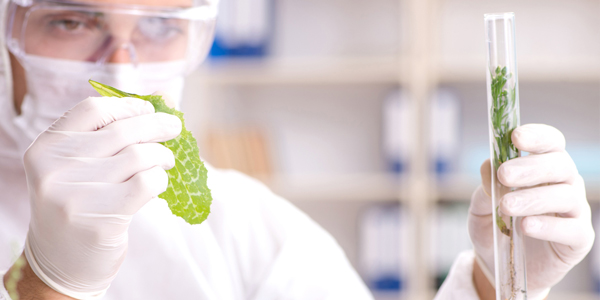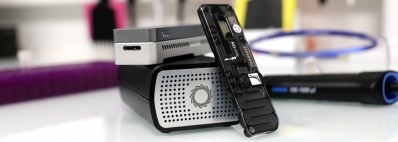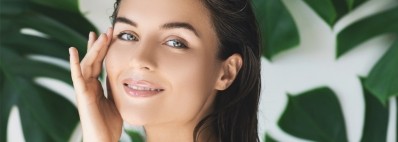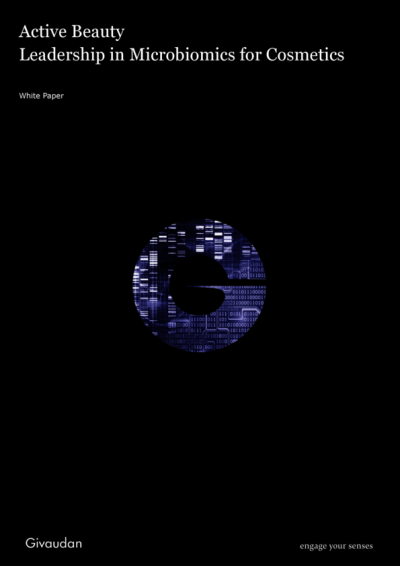Promotional Features
Givaudan: Developing actives for the growing clean and natural beauty market
The clean and natural lifestyle trend is evolving and becoming ever-more important for consumers around the world. That fact is evident in the beauty sector, where consumers are paying more and more attention to ingredient lists when making purchases.
For example, in the US, 29% of women aged from 18 to 44 who buy beauty items look for products made with natural ingredients.1 In the UK, 43% of adults say ethical considerations are important when buying a brand for the first time.1
Consumers understand that clean and natural is about more than just the names of the main ingredients. A survey of 4,500 people in China, France, Germany, the UK and the US found 72% of people consider the quality of ingredients and 61% of people consider their source.2 More than half of people assess how raw materials are converted into the final product and around one-third of people factor transportation and packaging into their purchasing decisions.
Millennials, the largest demographic group in the US and globally, pay particular attention to whether beauty products fit with their definitions of clean and natural.3 That matters as these young consumers buy more cosmetics.4
These factors are driving sustained, strong growth in sales of beauty products that live up to the standards of modern consumers. In the UK, sales of certified organic and natural beauty products grew by at least 13% every year from 2013 to 2018, swelling the size of the market from £31.8m to £86.5m over the analyzed period.5
The strong growth is set to continue in the UK and beyond, with the global natural organic beauty market forecast to almost double between 2016 and 2024.6 That forecast reflects the fact that natural organic beauty is on the rise and consumers will pay a premium for such products. Millenials will pay almost 20% more for natural organic beauty products.7
As the global growth suggests, interest in products perceived to fit in with a clean and natural lifestyle is not confined to the West. In China, being clean is also a way of life. More than half of China’s new middle class, dubbed Mintropolitans, are making efforts to reduce their carbon footprint.1 In South Korea, many facial skincare brands already use the "EWG green-safe" claim and show less interest in ‘free-from’ ingredient claims. The claim will also make inroads into China and Southeast Asia over the next few years, seeded by K-Beauty brands.
The rapid growth in the clean and natural subcategory of beauty products gives manufacturers the chance to increase sales. However, companies that try to seize the opportunity will encounter barriers.
Meeting demand for clean, natural products
Manufacturers need to find ways to create beauty products that work how consumers have come to expect but are free from ingredients they have rejected. The potential for criticism to spread quickly online means there is no margin for error, either in the choice of ingredients or the performance of products. The scale of that challenge is driving beauty companies to seek out partners that can help them navigate and stay ahead of the fast-changing market.
Anticipating the arrival of the natural trend, Givaudan Active Beauty began building a portfolio of natural actives in 2008. The goal was to apply new technologies to established botanicals to create natural actives for use in skincare and haircare products. Givaudan Active Beauty sought to design its portfolio around key claims in each sector, such as anti-aging and shininess.
Done well, the process of producing natural actives requires extensive capabilities. It can take several tons of fresh plants to make 1kg of active molecules, making the ability to source large quantities of raw materials essential. However, manufacturers of natural actives cannot use just any raw materials. The demands of consumers and other groups mean raw materials and their suppliers must be screened carefully.
Screening of the raw materials themselves should establish the active molecule content of the plants. Equally, buyers of raw materials should seek to partner with local growers to ensure the quality of raw materials and the traceability and sustainability of supply. The goal is to secure the yearlong supply of plants while respecting and enhancing the natural, economic and social ecosystem in each growing area and along the supply chain.
These considerations informed Givaudan’s Pathfinder sustainability program and Origination program, equipping it to provide manufacturers with natural actives aligned with the ethics of consumers.
The high resolution botanical actives
Sourcing sustainable, traceable and high-quality raw materials is just the start of the process. Extracting the full power of raw materials requires the use of advanced technologies that can reveal new uses for age-old plants. At the same time, producers of natural actives need to limit their processing to methods that are in line with consumer perceptions of natural.
At Givaudan, those pressures led to the development of NaDES, also known as Natural Deep Eutectic Solvents. NaDES is an alternative to conventional solvents that uses a process known as eutectic extraction to capture key metabolites, thereby enabling the capture of biomimetic extracts with augmented phytoactive profiles and improved performance.
Since introducing the first NaDES-based botanical collection late in 2015, Naturex, now part of Givaudan, has used the technology to build a portfolio of natural actives designed around the needs of beauty companies and consumers.
The portfolio features products such as Selaginella Pulvinata extract Hydranellys, which is designed to increase skin moisturising and strengthen the barrier function, and Eliorelys, which is an anti-photoageing active.
Translating the power of nature into new concepts
The portfolio of natural actives provides Givaudan with the building blocks needed to address the demands of today’s consumers. That fact is demonstrated in a project to develop a product for Generation Z. In seeking to create a product that results in “Instagrammable” skin and pleasant sensory characteristics, Givaudan combined its Hydranellys, Eliorelys and Hibiscus Acids actives in My Blue Guard High Defence.
My Blue Guard High Defence features an ingredient list that is 95% of natural origin, showing the potential to create products that meet the ethical and beauty demands of consumers. Beauty companies that use natural actives to meet these demands stand to grow their sales by targeting a fast-emerging part of the market.
To learn more about: www.givaudan.com
To learn more about Hydranellys™: https://www.givaudan.com/fragrances/active-beauty/products/hydranellys%E2%84%A2
To learn more about Eliorelys™: https://www.givaudan.com/fragrances/active-beauty/products/eliorelys%E2%84%A2
To learn more about Rutin: https://www.givaudan.com/fragrances/active-beauty/products/rutin
To learn more about My Blue Guard High Defence: https://www.givaudan.com/media/trade-media/2019/givaudan-active-beauty-launches-my-blue-guard-hd
References
1. Mintel: Global Market Research & Market Insight. Mintel Available at: https://www.mintel.com/. (Accessed: 25th November 2019)
2. Cracking the code on consumers’ health-and-wellness preferences. AlixPartners Available at: https://www.alixpartners.com/media/11483/ap_health-and-wellness-flyer_june_2018.pdf. (Accessed: 26th November 2019)
3. World Population Prospects - Population Division - United Nations. Available at: https://population.un.org/wpp/. (Accessed: 26th November 2019)
4. Analytics, T. The TABS Analytics 5th Annual Color Cosmetics Study: Cosmetic Market Trends to Watch. Available at: https://www.tabsanalytics.com/blog/tabs-analytics-5th-annual-color-cosmetics-study-cosmetic-market-trends-to-watch. (Accessed: 26th November 2019)
5. Organic Beauty and Wellbeing Market 2019. Soil Association Available at: https://www.soilassociation.org/media/18023/soil-association-organic-beauty-and-wellbeing-report.pdf. (Accessed: 25th November 2019)
6. Natural and organic beauty: forecasted market size worldwide 2016-2024 | Statista. Statista Available at: https://www.statista.com/statistics/750779/natural-organic-beauty-market-worldwide/. (Accessed: 25th November 2019)
7. Millennial preferences in beauty and personal care products | AlixPartners. Available at: https://www.alixpartners.com/insights-impact/insights/millennials-preferences-beauty-personal-care-products/. (Accessed: 26th November 2019)
The portfolio features products such as Selaginella Pulvinata extract Hydranellys, which is designed to increase skin moisturising and strengthen the barrier function, and Eliorelys, which is an anti-photoageing active.
